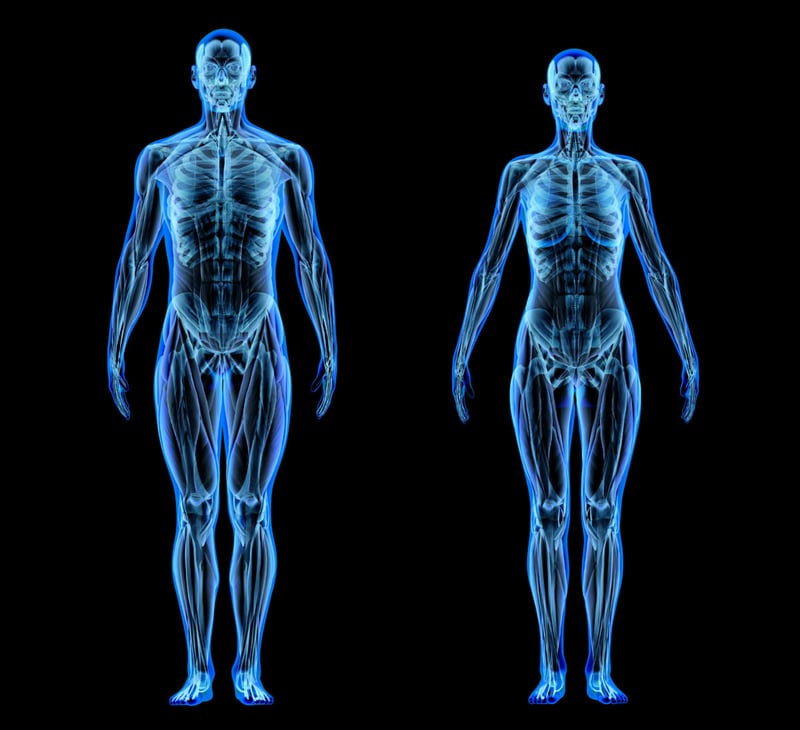
Laffaye, G, Wagner, PP, and Tombleson, TIL. Countermovement jump height: Gender and sport-specific differences in the force- time variables. J Strength Cond Res 28(4): 1096–1105, 2014.
Key Takeaways
Gender:
Males JUMP HEIGHT was significantly higher than females +26.4%
LOAD was significantly higher in males +36.3%
EXPLODE was significantly higher in males +5.75%
TIME and ECC-TIME were not significantly different between males and females
Jump Height:
JUMP HEIGHT: Baseball > football > volleyball and basketball
LOAD is positively correlated with JUMP HEIGHT r = 0.52
EXPLODE is positively correlated with JUMP HEIGHT r = 0.57
Sport-Specific Signatures:
Volleyball players have higher TIME and ECC-TIME
Football and Baseball players have lower TIME and ECC-TIME
Football and Baseball players have higher LOAD and EXPLODE
Basketball players have lower LOAD and EXPLODE but also lower TIME and ECC TIME
“Critical information can be directly extracted from the force-time (F-T) curve during the vertical countermovement jump (CMJ).”
POPULATION: A total of 273 subjects, including 189 males and 84 females, were used in the study. All of the participants were of an elite standard, competing at a college or professional level in a range of sports, including volleyball, basketball, baseball, football, or others.
The questions covered:
Do sport-specific “signatures” or profiles exist with regard to the inherent demands of their sport?
What factors of the force time curve result in differences in jump height between males and females?
Athletes use jumping strategies that are specific to the constraints of their sport. Furthermore, playing and practice of a sport shape the components of athletes jump. Counter movement jumps of 273 subjects, including 189 males and 84 females, were performed on a force platform and compared. The subjects consisted of elite athletes from the professional and collegiate level of different sports.
The highest jump heights were noted in baseball and football athletes that displayed explosive jump profiles with high relative eccentric rate of force development and concentric force (LOAD and EXPLODE). Although football and baseball athletes do not perform repeated jumps during competition, they require maximal explosive actions in a rested state for sprinting, pitching, or tackling. Comparatively, basketball and volleyball athletes display a time prevailing jump with a high ratio of eccentric time to total time. The time prevailing jump of basketball and volleyball athletes is likely due to the need for correct timing with jumping and the need to out jump an opponent without time to perform a deep eccentric movement.
When comparing the jump profiles of males and females the eccentric time and total time of the jump movement were similar between genders. However, the differences in muscle architecture and structural dimensions of muscles allow males to produce a greater eccentric rate of force development. The greater eccentric rate of force development allow for greater stretch shortening cycle and more elastic energy to be stored in the tendons.
The sporting requirements have to be taken into account in the athlete’s training program because the exact athletic demands and, more specifically, the force-time profiles are not comparable between the sports analyzed.
The goal of this study was to assess (a) the eccentric rate of force development, the concentric force, and selected time variables on vertical performance during countermovement jump, (b) the existence of gender differences in these variables, and (c) the sport- specific differences. The sample was composed of 189 males and 84 females, all elite athletes involved in college and professional sports (primarily football, basketball, baseball, and volleyball). The subjects performed a series of 6 countermovement jumps on a force plate (500 Hz). Average eccentric rate of force development (ECC-RFD), total time (TIME), eccentric time (ECC-T), Ratio between eccentric and total time (ECC-T:T) and average force (CON-F) were extracted from force-time curves and the vertical jumping performance, measured by impulse momentum. Results show that CON-F (r = 0.57; p , 0.001) and ECC- RFD (r = 0.52, p , 0.001) are strongly correlated with the jump height (JH), whereas the time variables are slightly and negatively correlated (r = 20.21–0.23, p , 0.01). Force variables differ between both sexes (p , 0.01), whereas time variables did not differ, showing a similar temporal structure. The best way to jump high is to increase CON-F and ECC-RFD thus minimizing the ECC-T. Principal component analysis (PCA) accounted for 76.8% of the JH variance and revealed that JH is predicted by a temporal and a force component. Furthermore, the PCA comparison made among athletes revealed sport-specific signatures: volleyball players revealed a temporal-prevailing profile, a weak- force with large ECC-T:T for basketball players and explosive and powerful profiles for football and baseball players.